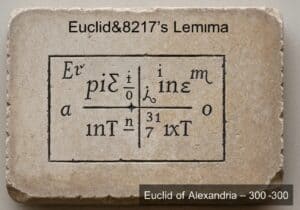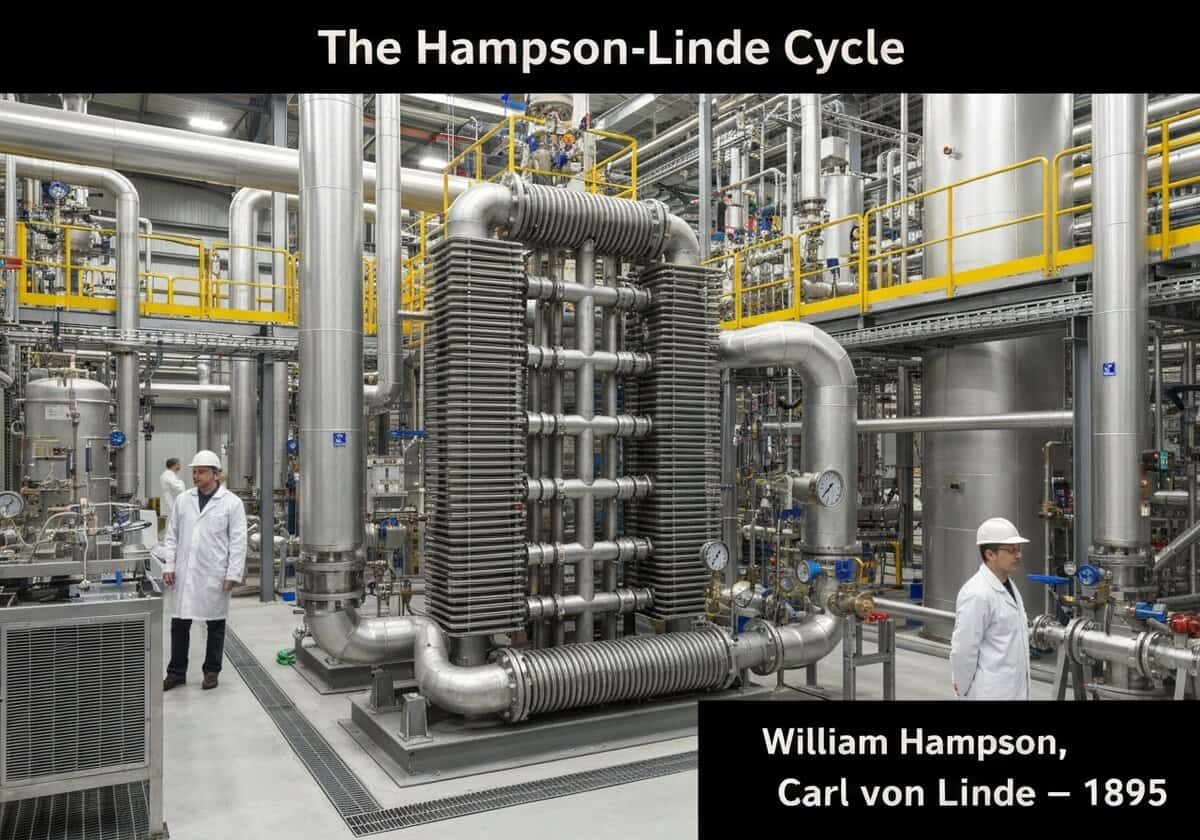汉普森-林德循环利用焦耳-汤姆逊效应和再生冷却技术,将空气等气体液化。高压气体在逆流式热交换器中被从膨胀阀返回的低温低压气体冷却。这逐渐降低阀门处的温度,直至降至临界点以下,开始液化,这构成了现代气体液化工业的基础。


汉普森-林德循环利用焦耳-汤姆逊效应和再生冷却技术,将空气等气体液化。高压气体在逆流式热交换器中被从膨胀阀返回的低温低压气体冷却。这逐渐降低阀门处的温度,直至降至临界点以下,开始液化,这构成了现代气体液化工业的基础。
Independently developed by William Hampson in Britain and Carl von Linde in Germany, this cycle represented a major breakthrough. Its elegance lies in its simplicity and self-reinforcing nature. The key component is the regenerative heat exchanger, typically a set of coiled pipes. Incoming high-pressure gas flows through an inner pipe, while the cold, expanded gas from the Joule-Thomson valve flows back over the outside of this pipe. This counter-flow arrangement ensures the incoming gas is continuously pre-cooled by the coldest available return gas. With each pass, the temperature of the gas entering the expansion valve drops further. Eventually, the temperature falls below the gas’s inversion temperature, and the Joule-Thomson expansion produces significant cooling. This cooling is carried back through the heat exchanger, creating a positive feedback loop until the temperature is low enough for a fraction of the gas to condense into a liquid upon expansion. This process made the large-scale, commercial production of liquid air feasible for the first time.
迎接新挑战
机械工程师、项目、工艺工程师或研发经理
可在短时间内接受新的挑战。
通过 LinkedIn 联系我
塑料金属电子集成、成本设计、GMP、人体工程学、中高容量设备和耗材、精益制造、受监管行业、CE 和 FDA、CAD、Solidworks、精益西格玛黑带、医疗 ISO 13485
汉普森-林德循环
(如果日期不详或不相关,例如 "流体力学",则对其显著出现的时间作了四舍五入的估计)。
相关发明、创新和技术原理
{{标题}}
{%,如果摘录 %}{{ 摘录 | truncatewords:55 }}
{% endif %}